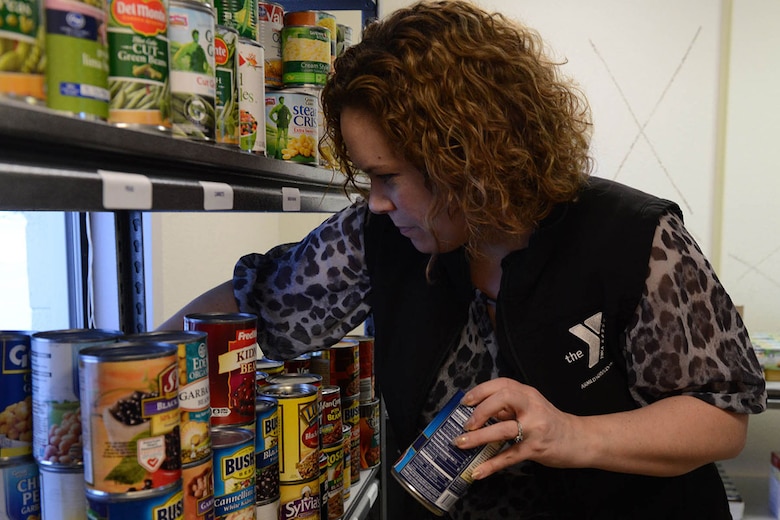Author Archives: argerlac
How Safe Is It To Eat Takeout
That’s worth knowing. Schaffner is a distinguished professor at Rutgers University in New Jersey whose expertise includes quantitative microbial risk assessment, predictive food microbiology, hand-washing and cross-contamination.
“I know people are worried, but from what we know currently about the virus, it’s safe to eat food prepared at restaurants so long as you take the proper precautions — in particular hand-washing,” says Schaffner.
As the coronavirus spreads in the U.S. and Americans heed directives to stay home, takeout and delivery of prepared food is picking up. Yet in these fearful times, many of us are wondering if eating takeout is a good idea. (Plus shouldn’t we be cooking all those groceries we stocked up on?)
Luckily for lazy cooks, eating food prepared in restaurants appears to be a safe choice. Current guidance from the Food and Drug Administration states that “there is no evidence to suggest that food produced in the United States can transmit COVID-19.
www.npr.org/sections/health-shots/2020/04/08/822903487/how-safe-is-it-to-eat-take-out
In Lockdown Mode: Pantry Stock-up Basics
Prepper Pantry Basics
There are a few items that are critical to a well-stocked prepper pantry. Stockpiling these items allows us to enjoy many of the basic recipes that we eat every day.
What should I store in my survival long term food storage supply?
- Grains: wheat, Kamut, white rice, corn, rolled oats, steel-cut oats, pasta, and cocoa powder
- Legumes: black beans, pinto beans, white beans, split peas, and lentils
- Dehydrated Vegetables: onions, carrots, peppers, celery, and potato flakes
- Seeds: flax seeds, chia seeds, sesame seeds, poppy seeds, and alfalfa seeds
- Sweeteners: honey, maple syrup, granulated sugar, and brown sugar
- Dairy: non-fat powdered milk, cheese (powdered, canned, freeze-dried), evaporated milk, and dried eggs
- Cooking basics: baking soda, baking powder, cream of tartar, corn starch, iodized salt, pink Himalayan salt, canning salt, vinegar, lemon juice, soy sauce, and yeast
- Spices: beef and chicken bouillon, chili powder, cumin, garlic (salt, granulated, and powder), onion powder, seasoned salt, creole seasoning, black pepper, lemon pepper, crushed red pepper, cayenne pepper, turmeric, oregano, basil, thyme, bay leaves, paprika, cinnamon, nutmeg, cloves, ginger and allspice
- Fats: Coconut oil, olive oil, vegetable oil, peanut butter, and canned butter
Your list will likely be a little bit different than ours. There are some things that would make sense to store such as vegetable shortening due to the long shelf life. I have stored it in the past but I never use it. I decided to replace it with coconut oil because that is our favorite.
https://theprovidentprepper.org/prepper-pantry-200-common-baking-substitutions-to-the-rescue/
Expanded COVID-19 Testing Available
Effective this week:
INDIANAPOLIS (WISH) — Indiana is opening up COVID-19 testing to more Hoosiers, with expanded criteria and new testing services at 20 sites around the state.
The Indiana State Department of Health has tested more than 87,000 people at drive-thru clinics and with strike teams, Dr. Lindsay Weaver, chief medical officer of ISDH, said in a Tuesday press briefing with Gov. Eric Holcomb. The eligible groups for that testing up until Tuesday had been symptomatic essential workers and their households, as well as symptomatic people with underlying conditions that make them high risk.
As of Tuesday, that testing expands to include any Hoosier with virus symptoms, people in close contact with those who have tested positive and residents of congregant communities.
Each Indiana National Guard armory site will be open at least eights hours per day, Monday through Friday.
People who want to be tested at these sites are encouraged to sign up online, but a call-in line will also be available, Weaver said. Weaver did not provide a web address or a phone number during the press conference.
To sign up online, users will self-report symptoms in the Optum online screening tool and register to be assigned an appointment date and time. That registration portal will open 48 before a testing site opens, Weaver said.
No one will be charged for testing, and you do not have to have insurance to be tested. People who have private insurance are asked to bring their insurance information with them to the testing, she said.
Test results should be available within 48 hours and will be provided to both the person tested and ISDH. People who test negative will receive a text or email. People who test positive will receive a phone call, she said.
When all 50 sites around the state have opened, up to 30,000 people will be able to be tested weekly, in addition to ongoing ISDH testing.
Weaver said OptumServe will provide all the supplies, including personal protective equipment and workers and will collect the swab specimens and manage the testing and reporting of results. The cost to the state at the time of the briefing was $17.9 million. Weaver said the hope was that a good portion of that cost would be covered by federal grants. It was not clear what span of time that testing cost covered.
The locations of the additional 30 sites to be added will be based on hot spots and needs, and the testing will continue on a month-to-month basis, Weaver said.
According to the governor’s office, about 4,400 more Hoosiers will be tested every day in the initial phase of Optum testing. And when all 50 sites are open, as many as 6,600 more Hoosiers can be tested per day.
Indiana opens up COVID-19 testing to all Hoosiers with symptoms
Vegetable Garden Shortcuts
Humor During Pandemic
Laughter During a Pandemic: Why People Turn to Humor During a Crisis
Why do people turn to humor during tough and fearful times, especially when it pokes fun of the very fear-inducing uncertainties we’re anxious about in the first place? Is this really the time for virus puns and cheeky song remakes about hands touching hands?
thriveglobal.com/stories/laughter-during-a-pandemic-why-people-turn-to-humor-during-a-crisis/
Hoosier National Forest Hikes
 With 27 different trail systems to choose from varying from .8 mile in length to 48.7 a hiker can certainly find the length of trail to fit their needs. Most of our trails also have loops so you can make day hike to fit the time that you have available.
With 27 different trail systems to choose from varying from .8 mile in length to 48.7 a hiker can certainly find the length of trail to fit their needs. Most of our trails also have loops so you can make day hike to fit the time that you have available.
www.fs.usda.gov/activity/hoosier/recreation/hiking/?recid=41466&actid=50
13 free online workouts to try while you’re stuck at home
Words for the Grief-Stricken
Here are some ways you can give support to someone who is grieving:
Be a good listener. Sometimes the best thing you can offer to someone who is grieving is to listen. Assure the person that it is okay to talk about his or her feelings. Although you cannot erase the pain of the bereaved person’s loss, you can provide a great deal of comfort by being there to listen.
Respect the person’s way of grieving. There is no right or wrong way to grieve. Everyone grieves in his or her own way. The sadness of loss, however, is universal.
Accept mood swings. Be aware that a grieving person will have emotional ups and downs. Grief is often described as an emotional roller coaster. Someone who has just lost a loved one may feel fine one moment and overcome with emotion the next. This is a normal part of the grieving process.
Avoid giving advice. It is best to avoid making suggestions about what the bereaved person should or shouldn’t do. Such advice is usually well meant, but it may make the bereaved person feel worse. Instead, let the person know that you recognize how great his or her loss is. For example, you might say, “This must be a difficult time for you,” or “How painful this must be for you and your family.”
Refrain from trying to explain the loss. Words that are meant to console the bereaved can in some cases have the opposite effect. Avoid saying things like “Your loved one is in a better place,” “It is God’s will,” or “At least she or he is no longer suffering.” Listening is more helpful.
Help out with practical tasks. A bereaved person may be glad to have help with activities like grocery shopping, preparing meals, making phone calls, doing laundry, babysitting and so on. Rather than saying, “Let me know if there is anything I can do to help,” offer assistance with specific tasks you are in a position to help with.
Stay connected and available. There is no timetable for grief. People who are grieving need time to heal, so be patient. Let the bereaved person know that you will check in often. Even if he or she is not yet ready to talk or to be around others, simply knowing you’re there can be very comforting.
Offer words that touch the heart. It’s natural to struggle with finding the right words. Simple words are often the best. For example, say: “I’m so sorry for your loss. How can I help?” No matter how unsure you may feel about the support you are offering, what matters most is that you are genuinely concerned and want to help. The bereaved person will likely appreciate your sincere efforts to be supportive.
www.cancercare.org/publications/67-how_to_help_someone_who_is_grieving



/cdn.vox-cdn.com/uploads/chorus_image/image/66523682/yogawoman.0.jpg)
